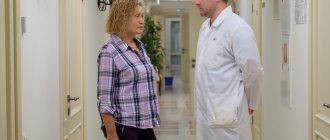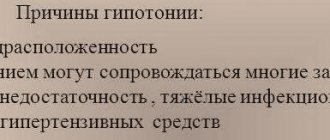Hands are the second most important part of the body (after the face), which is paid attention to during visual contact. At the same time, after performing a rejuvenating procedure on the face, the hands can show the real age of a person.
Dilated veins on the arms of famous artists
The most common reasons for the appearance of dilated veins in the arms are: increased stress on the arms due to the characteristics of professional work or sports and age-related changes associated with hypotrophy of the skin, subcutaneous tissue, as well as a decrease in the number of elastic fibers in the vein wall.
Age-related changes on the hands
Is there a way to improve the appearance of your hands and remove unsightly, crooked, bulging veins on your hands? Yes, there is a way! The technique of sclerotherapy of veins in the arms in Moscow has been successfully used for a long time in our phlebology center. It is also suitable for eliminating enlarged veins and spider veins on the legs, face and other parts of the body. Hands are no exception to this technique, but its implementation has a number of subtleties, and therefore, it is performed only by highly professional phlebologists who have extensive experience working with sclerotherapy drugs.
Why is sclerotherapy for unsightly arm veins better than other treatments?
To remove veins in the arms, classical techniques can be used - miniphlebectomy in its cosmetic version (removal of veins through micropunctures) or endovenous laser obliteration (suitable only for straight venous areas of large diameter). However, these techniques are quite traumatic, expensive and in some cases not very cosmetic - after the operation, bruises persist for several weeks, and scars from punctures may remain.
In contrast to these procedures, sclerotherapy on the hands is effective, safe, its implementation does not require serious financial costs, and the ability to work is not impaired during this manipulation.
Important to remember!
Problems with arm veins are not a minor pathology. It can lead to a number of complications and the appearance of additional negative manifestations. Thus, in a number of situations when vein pathology is caused by problems with blood circulation, symptoms such as increased body temperature (there may be minor indicators), hyperemia of the skin, the presence of a lump or compaction at the site of the lesion, the development of edema, change in skin color, weakness muscles and the appearance of ulcers on the skin. This process can lead to the formation of blood clots, more commonly known as thrombi. And this is a condition that threatens human life, since blood clots can break off.
Don't forget about preventing the problem. After all, prevention is easier than cure. All preventive measures are aimed at preventing veins from bloating. They are aimed at reducing stress and maintaining a healthy lifestyle. So, for prevention, they recommend exercise, giving up bad habits and coffee, proper nutrition and other simple measures. If there are any disturbing signals and symptoms, you should contact a specialist as quickly as possible - this will allow you to start treatment at earlier stages and stages, when you can help the person faster and more effectively.
There are contraindications. You should consult your doctor
How is sclerotherapy performed on the hands?
No special preparation is required for this procedure. The procedure itself can be performed in a treatment room (manipulation room). After treating the patient’s hands with an antiseptic solution, the phlebologist performs a puncture of the dilated vein on the arm with a needle and injects into it with a syringe a solution or foam form of a pre-prepared sclerosant (a substance that causes “sticking” and subsequent “resorption” of the target vein). The vein is punctured to administer the sclerosant using a thin needle of very small caliber, which ensures virtually no pain during the injection. After administering the drug, the hand is bandaged with an elastic bandage or a special compression glove is put on and the patient is sent home. Occlusion (“gluing”) of the vein occurs within a few days; resorption of the dilated vein usually takes several weeks.
Injection of sclerosant into a dilated vein on the hand
Filler Teosyal Redensity
Another great filler for replenishing volume is the Swiss Teosyal Redensity. It appeared on the market relatively recently and managed to win the most positive reviews from both cosmetologists and patients.
The main active component of Teosyal is also hyaluronic acid of non-animal origin. This preparation contains quite a lot of acid: 25 mg/g. And the acid molecules are bound together so tightly that the disintegration of their compounds occurs slowly. This explains the long-lasting effect after contouring with Teosyal. Manufacturers consider the purest hyaluronic acid to be the main advantage of the filler. The properties of the acid contained in this drug not only meet European pharmacological standards.
They exceed the required standards by several points, i.e. the acid is even purer than required by law.
Teosyal, in addition to hyaluronic acid, contains amino acids, antioxidants, vitamin B6, minerals, and lidocaine. Thanks to this cocktail, the skin regains its former radiance, elasticity, volume and wrinkles are smoothed out.
Results of arm vein removal 1 month after the procedure
Veins of the forearm before (left) and after (right) sclerotherapy
Veins of the dorsal surface of the hand before (left) and after (right) sclerotherapy
How to determine
It is possible to diagnose the disease using studies: Doppler sonography, MRI of the veins, ultrasound of the vessels of the upper extremities. The most modern diagnostic method for the occurrence of symptoms of varicose veins and phlebitis (inflammation of the walls of the veins) is considered to be duplex sonography (ultrasound examination of blood vessels).
Is it possible to clean the vessels? More details
What is venous thrombosis
Venous thrombosis is a disease in which a blood clot forms in a vein, gradually blocking the blood flow. This provokes stretching and thinning of the walls of blood vessels. Blood circulation is disrupted, as a result of which tissues die, ulcers and necrotic tissue lesions appear. The most dangerous complication of venous thrombosis is the rupture and migration of a blood clot, which can travel to the heart or lungs in a matter of seconds. In 90% of cases this leads to death. Therefore, if pathology is present, you must immediately consult a doctor and begin treatment.
Diagnosis of thrombosis
When visiting a medical facility, the doctor diagnoses the pathology and prescribes treatment. The main methods used to detect thrombosis are:
- coagulogram - blood test for clotting;
- magnetic resonance venography;
- duplex\triplex scanning of the veins of the upper extremities;
- ascending venography using a contrast agent;
- radionuclide scanning of the location of the thrombus;
- thromboelastography.
Ultrasonography
Ultrasound duplex scanning of veins is the “gold standard” for diagnosing thrombosis localized in the upper extremities. The technique allows you to quickly, highly informatively and non-invasively obtain information about the state of venous blood flow. The method is ideal for visualizing the veins of the extremities, neck, axillary and subclavian areas.
CT scan
Another popular method for diagnosing thrombosis. It is used mainly urgently, in case of suspected dangerous complication of deep vein thrombosis - pulmonary embolism. CT allows you to quickly assess the extent of the problem and select the most appropriate method of providing emergency medical care.
Hygroma of the finger
The appearance of a finger hygroma is a tumor-like formation (similar to a lump) localized on the finger, in the area of one of the joints (in some cases, multiple). Often the formation reaches 2-3 centimeters in a few days.
Often, hygroma of the finger looks like an ordinary wart, and only a doctor can accurately determine the pathology during examination.
A hygroma on a finger (a photo of which can be found on the Internet) can spontaneously open and, at first glance, disappear from the finger. But, as a rule, after some time the tumor appears again, since the capsule of the formation itself does not disappear anywhere, but continues to produce fluid and be filled with it. In addition, this can provoke the appearance of one more or even several hygromas on the finger (photo).
Of course, hygroma is not life-threatening, but painful and unpleasant sensations can affect the quality of life for the worse.
Types of hygroma
There are different types of hand hygromas:
Mucous cysts - hygromas occur against the background of deforming arthrosis of the joints. Most often they form at the distal interphalangeal joint - in this case, hygroma occurs in the area of the nail phalanx, at the base of the nail. Hygroma on the finger develops when osteophytes, present in deforming arthrosis, begin to irritate the skin, underlying tissues and capsular ligamentous apparatus. Because of this, a hygroma occurs - a formation that is hollow inside, in a transparent capsule, with transparent, jelly-like contents.
When a hygroma appears on the nail phalanx, it begins to put pressure on the growth zone of the nail and deform it.
Treatment of hand hygroma
Treatment boils down to excision of the cyst. Due to the fact that with mucosal cysts the skin over the lump on the hand becomes weak, the formation is excised along with the changed skin. After the operation, plastic surgery is performed - both with free skin grafts and with complex skin reconstructions.
A tendon ganglion is a cyst that is formed from the tendon sheaths and the walls of the tendon sheaths. Such hygroma of the hand can cause not only pain, but also limitation of motor functions.
Treatment of a tendon ganglion involves removing the formation - this does not pose any technical difficulty. After operations there are practically no relapses or side effects.
Synovial cysts in the area of the wrist joint (hand hygroma) are the most common type of hygroma.
Myth 6. Apitherapy (treatment with bees) will relieve varicose veins.
The healing properties of bee venom, which can activate physiological processes in the human body, have been known for a long time. Beekeeping specialists claim that the components of bee venom, in particular hirudin, can dissolve blood clots in the veins, relieve pain and venous network. In fact, as a result of a bee sting at the location of varicose nodes, you can easily damage the walls of the veins and get thrombophlebitis. Therefore, if you are planning to be treated with apitherapy, measure seven times!
Is the appearance of blood vessels on the legs a cosmetic or medical problem? Congenital or acquired?
Let's go in order. Often in the media, spider veins are positioned as the first stage of some serious disease. That is, if you have stars, then very soon you will encounter problems and diseases of the veins, and even complications. However, this is not true, since it is necessary to distinguish between a cosmetic problem and a medical problem. A person can have spider veins all his life on one or both legs and remain only a cosmetic problem. They are removed for aesthetic reasons using sclerotherapy, laser coagulation or radiofrequency obliteration (most often a combination of these methods is used), depending on the severity of the vessels. The medical problem is varicose veins, i.e. varicose veins, damage to the main superficial veins. This can already lead to very unpleasant consequences, so you need to treat varicose veins with all the seriousness of a medical problem. Although, of course, the aesthetic issue is not indifferent, especially to women.
Is this a congenital or acquired problem? Most varicose veins are a congenital (genetically determined) pathology that begins to manifest itself not from birth, but during life. At the same time, there are a huge number of external factors that influence both the manifestation of such heredity and the appearance of acquired disorders. First of all, this is pregnancy and childbirth, due to the hormonal effect on the walls of blood vessels. It is also a job that requires standing or sitting for long periods of time, excess weight, orthopedic problems (especially flat feet), and regular long-term wearing of high heels. I emphasize that only prolonged exposure to heels - all day long, and standing, can affect the development of this disease.
Features of the Lakhta Milon laser
Modern science has long appreciated all the advantages of using lasers in medicine. Therefore, today new, more advanced devices are constantly appearing, one of which is the domestically produced Lakhta Milon device.
With its help, you can perform minimally invasive operations in the shortest possible time, differing in:
- high degree of security,
- efficiency,
- speed,
- short recovery period,
- no need for general anesthesia.
How to independently diagnose whether there are varicose veins or not? If a vein is visible, is it varicose veins?
Varicose veins are diagnosed either by symptoms, i.e. according to subjective sensations: nagging, severe pain, heaviness in the legs, swelling, discomfort; or by objective: dilated veins, the presence of one or more nodes. In any case, such symptoms should not be ignored, but it is better to get advice and then monitor the development of the pathology. If the veins are clearly visible on the body, this does not indicate varicose veins. There are such people, they are also called “geographical map”, in whom the vessels are very close to the surface, and the skin is very thin. Varicose veins can only be differentiated using ultrasound, or rather duplex scanning. This diagnostic method shows the operation of the valves that lift blood up through the veins against the force of gravity of the earth. And if the valve does not work, it means that the vein is affected by varicose veins.
Bibliography
- Mukhina S. A., Tarnovskaya I. I. Practical guide to the subject “Fundamentals of Nursing”: textbook. - M.: Rodnik, 2005.
- www.who.int World Health Organization Publications WHO WHO/GSBI: Injection Safety and Related Procedures Toolkit.
- Savelyev N. “Injections, IVs, dressings and other medical procedures and manipulations”: - M.: AST, 2021.
- Bikkulova D.Sh. Venous access protocols are a comprehensive solution to CVC problems. //Journal Polyclinic 1(2)/2014
- Briko N.I., Bikkulova D.Sh., Brusina E.B., et al., Prevention of catheter-associated bloodstream infections and care of the central venous catheter (CVC). //Clinical recommendations. — M.: “Remedium Privolzhye”, 2021
Causes of pathology
The main reasons for the development of vein thrombosis are:
- Damage to the walls of blood vessels. Injury can be caused by infections, atherosclerotic plaques, childbirth, surgery, poor nutrition, and excessive physical activity.
- Blood clotting disorder. The problem occurs due to metabolic disorders or hormone balance in the body.
- Stagnation of blood. Occurs as a result of a sedentary lifestyle.
- Infectious diseases, pathologies of internal organs (heart failure, diabetes mellitus).
- Oncology and its treatment (hormones, chemotherapy, radiotherapy).
Indirect risk factors that influence the likelihood of pathology occurring are bad habits, wearing tight clothing, and adverse effects of the external environment.
The structure of the wrist joint
The wrist joint is very complex in its structure and this is largely due to its versatility. In order for us to make various movements of the wrist, various types of bones are “assembled” in the joint (radius, ulna, metacarpal bones, carpal bones, cartilaginous articular disc), connected by ligaments designed to ensure the strength of the joint. It is the ligaments that allow the wrist and hand to move, rotate and rotate in all directions. All these elements, merging in one place, form the capsule of the wrist joint, in the cavity of which there is synovial fluid.
Hygroma, “growing” in the wrist joint, gradually increases in volume, “pushes apart” the surrounding tissues and ligaments and, ultimately, protrudes from the back or palmar side of the wrist, resembling a moving ball in appearance.









